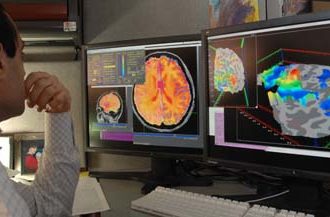Virtual colonoscopy: What is it, and is it a good choice for me?

During the past decade or so, news reports have helped raise awareness of the deadly risks of undetected colon cancer and the important role colonoscopy can play in detecting cancer in its early stages. Most reports have focused on the use of “traditional” colonoscopies that use a long, flexible, thin tube equipped with a camera to view the lower intestine and search for polyps. But in recent years, there’s also been a lot of talk about a non-invasive technique known as a “virtual” colonoscopy which has left some patients wondering which is the right approach for them.
Here’s a quick rundown of what you need to know:
What is a virtual colonoscopy?
A virtual colonoscopy uses diagnostic imaging like magnetic resonance imaging (MRI) or computed tomography (CT) to look for the presence of polyps, fleshy growths that can occur on the intestinal lining. Polyps may be an early indicator of colon cancer. No scope is used, there is no need for sedation and the technique is performed in the radiology department of a hospital or diagnostic center.
What does the procedure involve?
The day before your virtual colonoscopy, you’ll have to empty your bowels completely. This is usually done with the use of a specially prepared liquid laxative that acts to flush out your bowels. In some cases, your bowels may be cleared the day of the procedure using an enema.
The procedure itself is performed while you lie on a table connected to the imaging device that’s being used. You’ll be asked to bend your knees and bring them up as close to your chest as possible. The diagnostician will insert a thin, flexible tube into your rectum and pump air into your lower intestine to make it easier for the imaging device to “see” your colon. Images will be made while you’re lying on your back and on your stomach. You may be asked to hold your breath while each picture is being taken to avoid tiny movements that could blur the images.
During the procedure and afterward, the air may cause you to experience some cramping similar to gas pains. These can be alleviated following your procedure by expelling the air just as your would expel gas.
Is a virtual colonoscopy the best choice for me?
Your doctor can determine if you can be adequately screened using the virtual technique or if the traditional form of colonoscopy is a better choice. If you have a family history of polyps, the traditional route is probably the better of the two chocies since it allows for samples to be taken during the procedure. When polyps are detected by a virtual procedure, your doctor will still need to perform a traditional colonoscopy to test for the presence of cancerous cells.
Learn more.
If you’ve been considering a colonoscopy but haven’t chosen a gastroenterologist San Antonio offers world-renowned care options. The most important thing is to be screened as soon as possible. Call our office today to schedule a consultation and take that step toward a healthier future.

